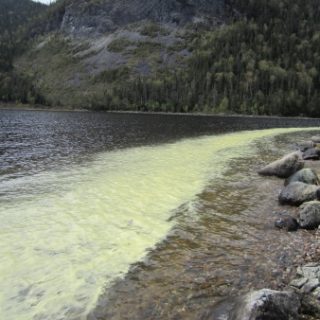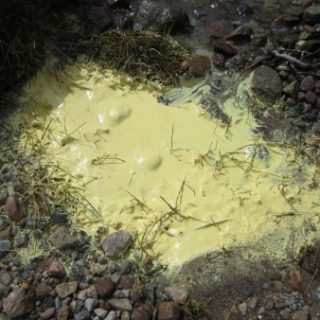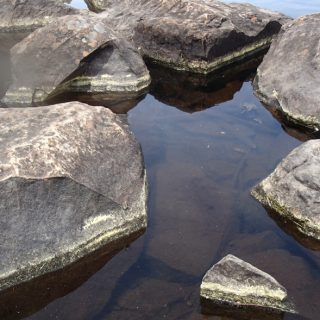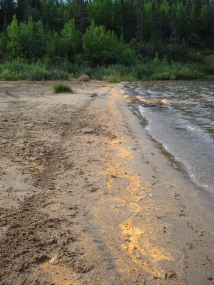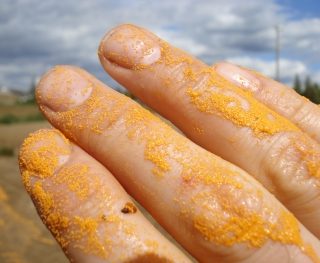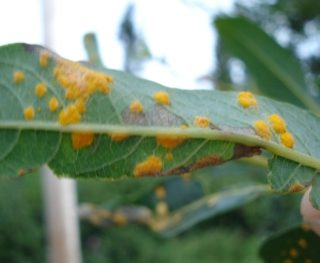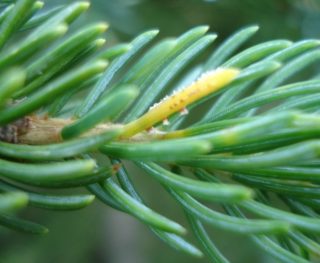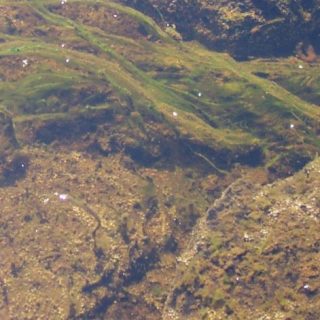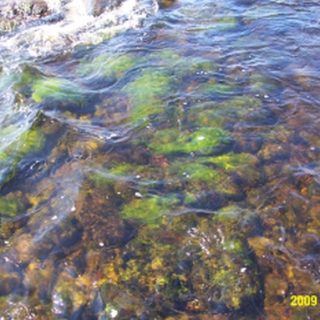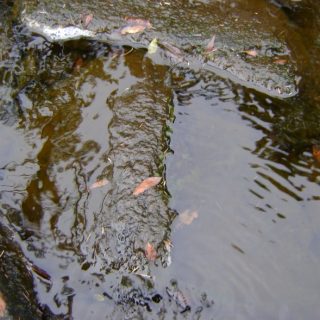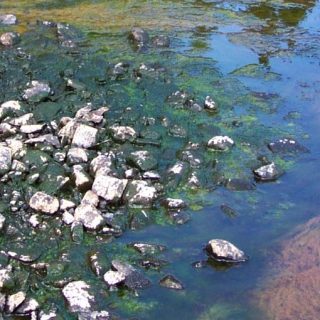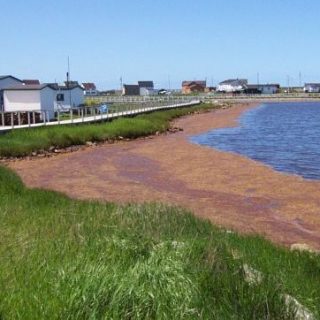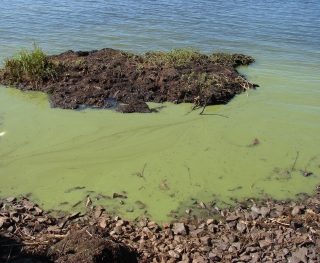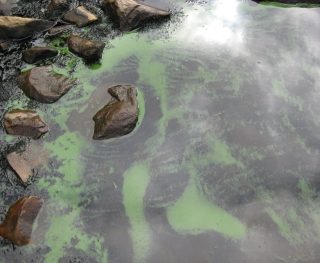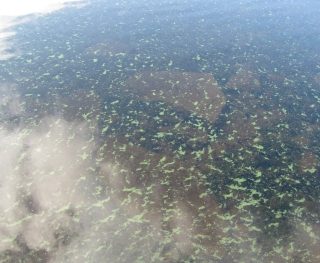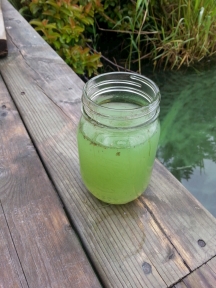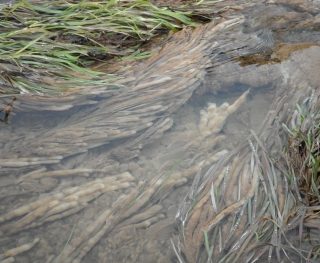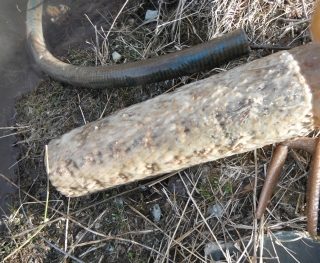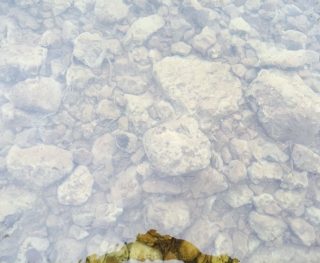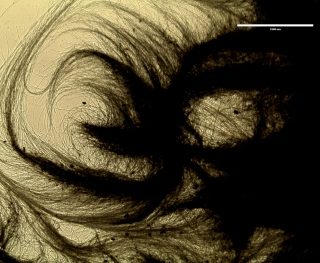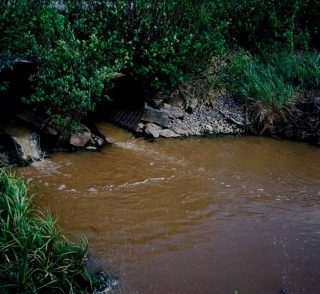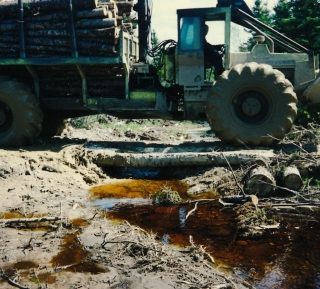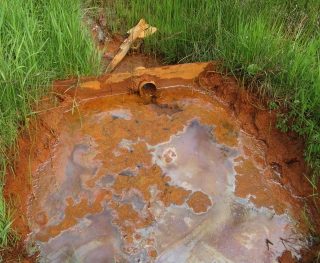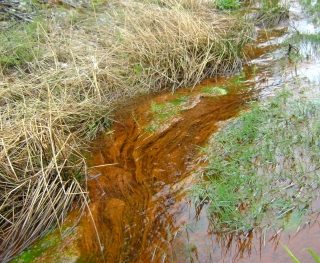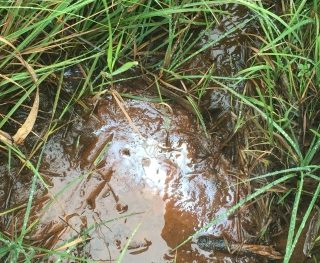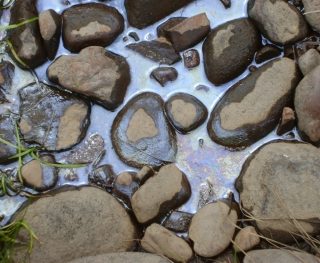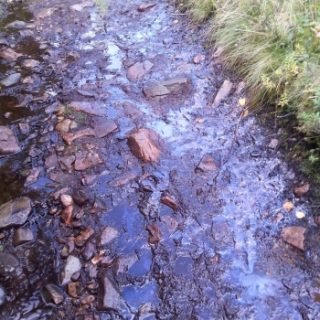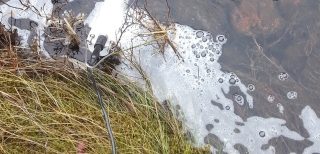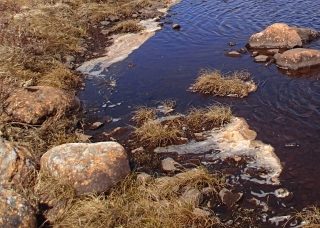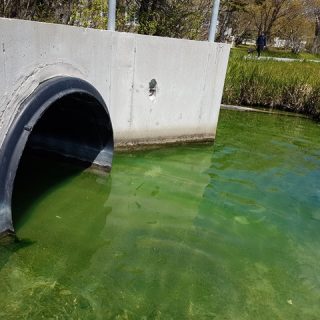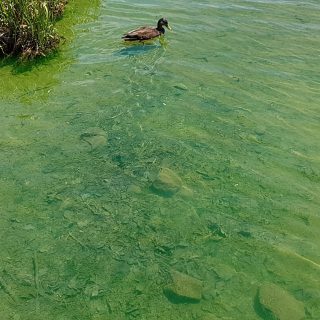From time to time, staff of the Water Resources Management Division document ‘Weird Stuff in the Water’. Sometimes, this ‘Weird Stuff’ is reported by the public or the media. Other times staff come across the ‘Weird Stuff’ during the course of their regular field work.
Quite often, the ‘Weird Stuff’ is not so weird after all. In most circumstances, naturally occurring substances or organisms near or in the water appear in greater concentrations, or in an uncommon form, which people are not accustomed to seeing. Unusual weather or climate conditions or the introduction of some natural or man-made stressor can upset the natural balance of the ecosystem, which can cause this ‘Weird Stuff’ to be more prevalent and obvious. Sometimes this ‘Weird Stuff’ is an important indicator that a more serious problem exists, for which more in-depth investigations may be necessary.
The following are just a few examples of ‘Weird Stuff’ documented in Newfoundland and Labrador waters:
- Pollen
- Rust Fungus
- Algae
- Cyanobacteria (Blue-Green Algae)
- Water Mould/Sewage Fungus
- Sedimentation
- Iron Bacteria
- Bog Sheen
- Foam
- Tracer Dye
*All photos by Water Resources Management Division staff
Pollen
Pollen is a naturally occurring substance released from most living plants as part of their natural reproductive cycle. In the spring and summer, pollen may accumulate on your car windshield, particularly if parked near a tree.
Quite often, similar pollen accumulations are reported by the public as paint or oil spills. Massive pollen accumulations similar to this one can be from many species of trees and shrubs, and can be most obvious when winds move the accumulations near the shoreline of a lake or pond.
Rust Fungus
In the summer of 2011, several lakes in the province had a bright orange substance floating on the surface and accumulating along the shorelines.
The substance looked and felt like Kraft Dinner powder!
Experts were able to determine that the substance was rust fungus spores, which are part of the natural life cycle of rust fungus. Although having been observed previously in parts of the province, accumulations of this magnitude are uncommon. Water testing determined that there was no health risk, nor impairment to water quality. Photos below show the rust fungus on deciduous and coniferous trees.
Algae
There are many types of algae found in Newfoundland and Labrador fresh waters. Algae are part of the natural ecosystem. Typically, algae are observed as a green or brown scum or filaments attached to solid objects on the bottom of a water body. When water levels drop, dried algae may look like a white powdery substance on the rocks in a stream. Sometimes it is mistaken for toilet paper!
Sometimes, when algae die off, they float to the surface and accumulate on a windward shoreline. Massive accumulations of algae are usually indicative of some change in the natural balance of the ecosystem and are often associated with excessive nutrient loading from sewage or fertilizer.
Cyanobacteria (Blue-Green Algae)
In late summer 2007, a cyanobacteria bloom was documented that affected several ponds in a watershed. This was the first confirmed occurrence in the province of Newfoundland and Labrador. cyanobacteria are microscopic organisms that can live in fresh or salt water.
Cyanobacteria is a type of photosynthetic bacteria, not a true algae, which is why the common name blue-green algae is inaccurate. Certain types of cyanobacteria may release a toxin called microcystin which is potentially harmful to humans, animals and aquatic life.
Cyanobacteria can adapt to live anywhere in the water column. Development of blooms is affected by light, temperature and nutrient concentrations. Blooms are more likely to occur in warm, shallow water which has significant nutrient loading.
Cyanobacteria haven been documented in several additional locations in the province since 2007. The Water Resources Management Division continues to monitor problem areas.
More information is available on the Cyanobacteria (Blue-Green Algae) page.
Water Mould / Sewage Fungus
In April 2013 an unusual ‘furry slime’ growth was documented in a stream in the province. The growth was first evident as an accumulation of grey-white slime on scientific monitoring equipment deployed in the stream. It was determined that the accumulation was also present in the substrate along a significant reach of the stream.
Consultations with water quality scientists across Canada indicated that the ‘slime’ was likely ‘sewage fungus’, a collective term for a mass of fungi, water moulds and filamentous bacteria.
Sewage fungus typically develops in water bodies suffering from organic waste pollution and can occur at any time during the year.
Water mould (Leptomitus lacteus), is one component of sewage fungus which has been known to thrive in winter conditions of cold, well oxygenated, fast flowing water. As the ‘slime’ was observed in late winter/early spring, water mould may have dominated the sewage fungus bloom.
Sedimentation
Sedimentation (sometimes called siltation) results when greater than normal quantities of fine particles of sediment, silt or clay (mud) get introduced into the water. Depending on the size of the particles and the velocity of the water, the sediments may stay in suspension for a long time and be carried downstream for many kilometers. 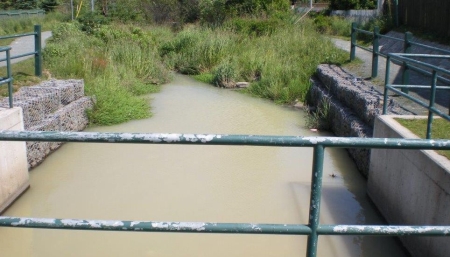
Typically, sedimentation occurs after precipitation or snow melt washes sediment from the land into waterways. Urban environments with a large amount of paved surfaces may notice sedimentation more frequently as dust and silt accumulated on these surfaces is carried into the water during each rainfall. Vegetation such as trees and grass can act as a sediment trap, preventing sediment from reaching streams.
Sedimentation may also be from improper construction site methods, such as in the photo to the right where muddy water from a construction site several hundred meters away flowed into this stream.
Short term sedimentation events can directly impact fish, invertebrates, birds and mammals that live in or near the water. Long term sedimentation can impact the ecological balance of a stream, pond or lake, and can detrimentally effect the spawning, nesting and rearing habitat of many species.
Sedimentation in streams can easily be prevented by diverting muddy water into vegetation or a low-lying area or containment structure and allowing the sediment to settle out before being discharged to a waterbody.
Iron Bacteria
Iron Bacteria are naturally occurring in soil, surface water and groundwater and thrive in the presence of natural or manmade sources of ferrous iron. They can be found anywhere that iron is exposed to normal environmental conditions. The iron-loving bacteria combine iron and oxygen, producing dense masses of orange- brown slime in and around stagnant or slow moving water.
There may also be a rainbow-colored, oil-like sheen visible on the water. Quite often, an unpleasant odour is evident when iron bacteria masses are disturbed.
Iron bacteria can be present in drilled or dug water wells, leading to undesirable colour, odour and stains or deposits on laundry or plumbing fixtures. Continuous buildup could lead to clogged pipes or corrosion of plumbing equipment.
Iron Bacteria are easily transported, sometimes unknowingly, from one site to another. Destruction or removal of iron bacteria can be quite difficult and is sometimes impossible.
Bog Sheen
Bogs and other areas of standing or stagnant water often produce a rainbow-like or iridescent sheen, very similar to the familiar sheen produced by oil or gasoline when they mix with water.
This naturally produced thin film on top of the water is a combination of bacteria and oxidized iron or manganese. A mass of iron bacteria producing reddish slime may also be present in the water.
The natural sheen may look so similar to an oil spill that members of the public report it to environmental officials.
There are several questions one should ask to determine whether or not a sheen is natural or the result of a petroleum spill:
- Smell: Products such as gasoline and diesel have a distinctive ‘petroleum’ smell; natural sheens do not smell like petroleum.
- Source: Are there any potential sources of petroleum products nearby, including any sources of possible runoff after precipitation?
- Poke Test: Break the oily surface with your finger or a stick. If the sheen breaks apart, it is likely a natural film. If the sheen moves together again, the film is likely petroleum based.
Foam
 Foam on rivers or lakes and along shorelines is a widespread, naturally occurring phenomenon. Organic matter and fatty acids are released into the water as vegetation and animals decompose. The fatty acids float on water’s surface, forming a thin film. Currents and wind then cause turbulence and wave action, allowing the fatty acids to entrain air in bubbles. As the water becomes more turbulent, it traps more air and the foam mass grows larger.
Foam on rivers or lakes and along shorelines is a widespread, naturally occurring phenomenon. Organic matter and fatty acids are released into the water as vegetation and animals decompose. The fatty acids float on water’s surface, forming a thin film. Currents and wind then cause turbulence and wave action, allowing the fatty acids to entrain air in bubbles. As the water becomes more turbulent, it traps more air and the foam mass grows larger.
Foam is commonly found after rainstorms or in the spring as meltwater washes decomposing vegetation and animal matter into waterways. Rivers and lakes fed by bogs and wetlands, which are high in organic matter and often yellow to dark brown in colour, tend to produce brown-tinted foam. Foam can also be tinted yellow in colour if it is formed during a period of high pollen production.
It is possible for foam on the water’s surface to be unnaturally formed. This usually occurs when people add substances such as detergents to a water body. There are some differences between natural and unnaturally formed foams:
| Source: | Natural | Man-made |
|---|---|---|
| Colour: | white, light tan or yellow to brown | white |
| Smell: | earthy, organic | fragrant or perfumey |
| Accumulation Pattern: | many locations along banks, eddies, pools | near the source |
| Persistence: | increases after rainfall and can cover large area | detergents are biodegradable so usually disappears quickly |
Residents are strongly discouraged from adding detergents to water bodies to make ‘bubble baths’ as the addition of these chemicals can alter the ecosystem they are added into and cause harm to aquatic organisms.
Tracer Dye
Tracer dyes are added to water intentionally for the purpose of tracking the flow of water from one location to another. These dyes are usually fluorescent in color so that their unnatural presence in a water body is easily visible. The presence of one of these dyes in a water body is no cause for alarm as the chemicals used are environmentally friendly, nontoxic, biodegradable and generally last only a short period of time.

